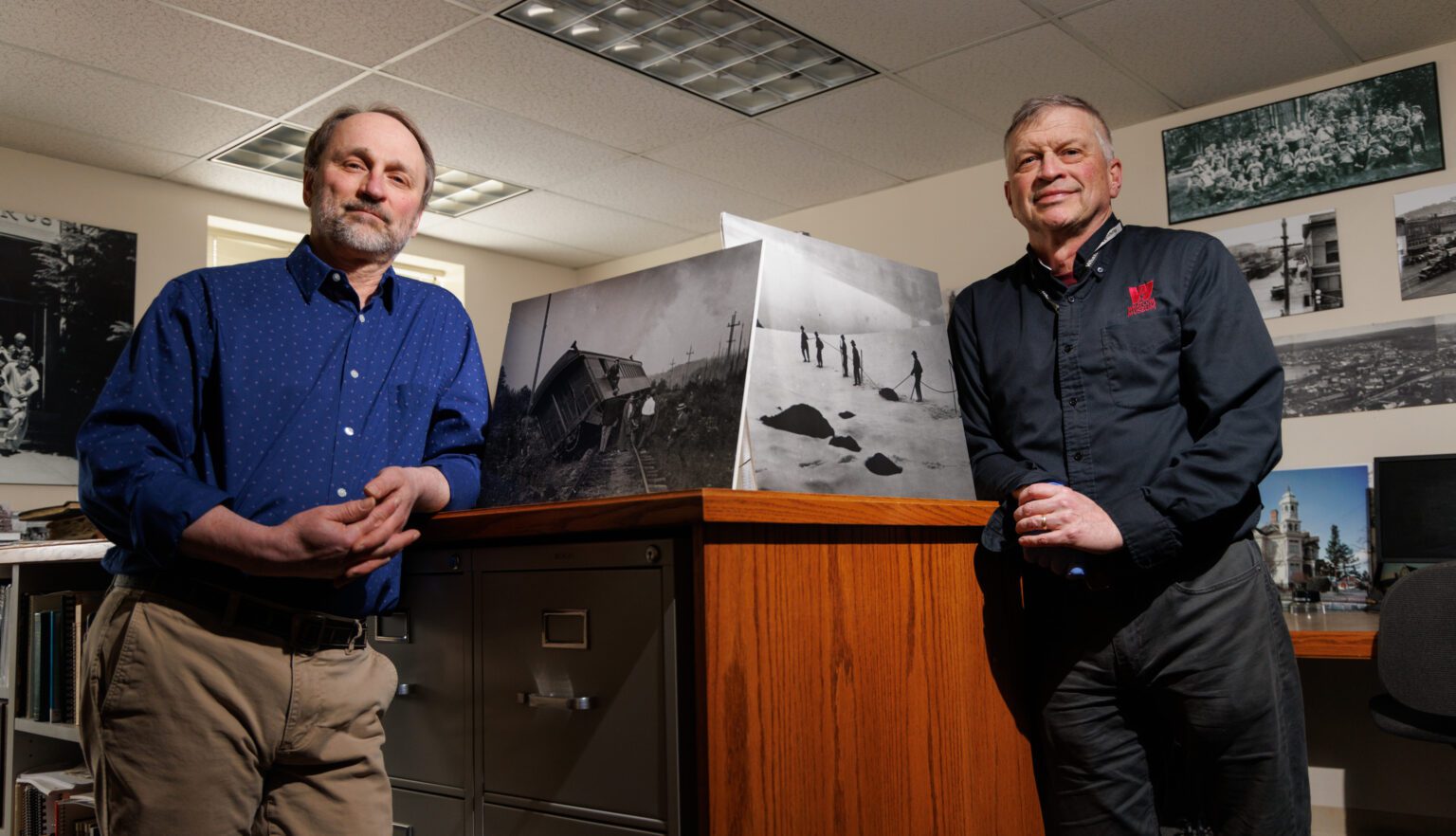It’s been half a century since the inaugural Ski to Sea saw blue jeans-clad athletes making their way down Mount Baker on skis and via bicycles, but the inspiration for the multi-sport relay race — which started out with three legs but now has seven — goes back much further.
At 10 p.m. on Aug. 10, 1911, the first Mount Baker Marathon saw 14 intrepid racers make their way from downtown Bellingham to the mountain. Some of them were in cars, while others made the journey via train. From Glacier, those who took the train ran to the summit of the mountain via Glacier Trail, while those who rode in automobiles started their ascent from the Middle Fork route east of Deming. The round-trip running routes were 28 and 32 miles, respectively.
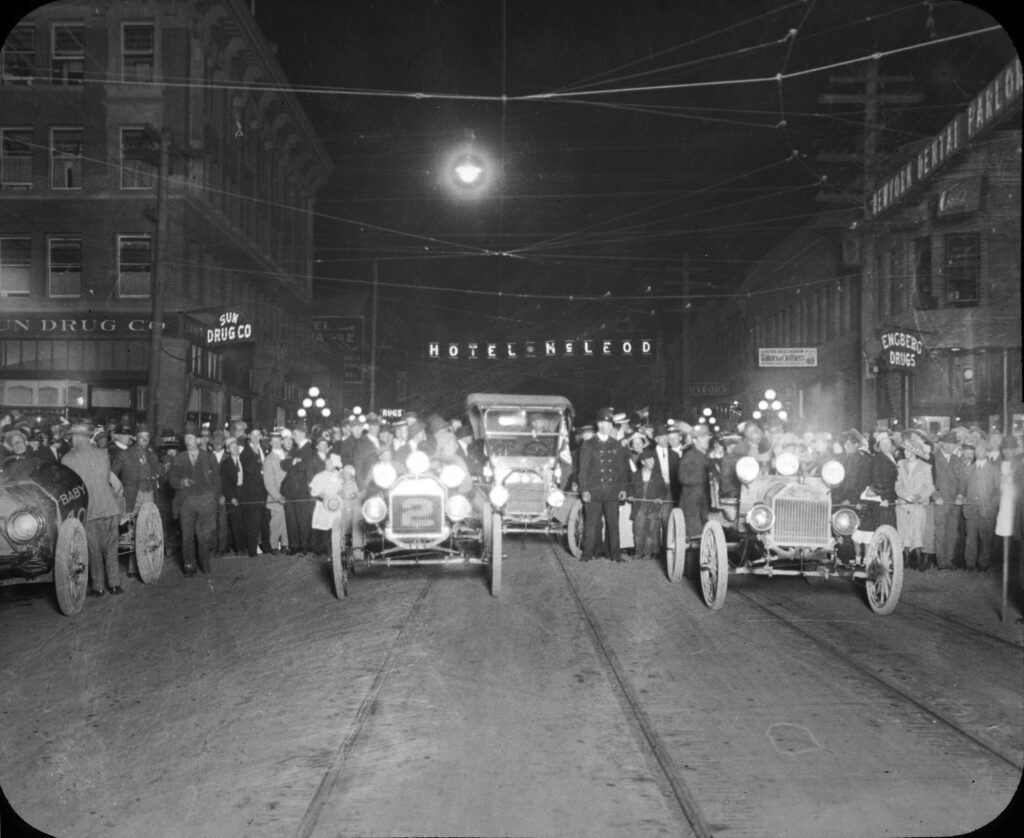
Jeff Jewell, Whatcom Museum’s photo archivist for the past 30 years, said people have often questioned why cars were included in a footrace.
“If you think of the technology of the time, back in the day this was exciting,” he said, noting racers modified Model Ts by taking the windshields off to make them as light as possible. Additionally, the wheels were fully chained to get through the mud.
The first Mount Baker Marathon wasn’t without hiccups, Jewell said, including a trail derailment caused by a bull on the tracks. Joe Galbraith won, and Harvey Haggard came in second. The second race, in 1912, had to be rescheduled due to inclement weather. In 1913, the third and final marathon was beset by a number of problems, including racers falling in crevasses, unmarked trails, missing officials and mass miscommunication. Miraculously, nobody died.
“The story that everybody has heard year in and year out is just a very small amount of the actual story,” said Todd Warger, who in addition to working at Whatcom Museum also directed “The Mountain Runners,” a 2012 docudrama about the historic race.
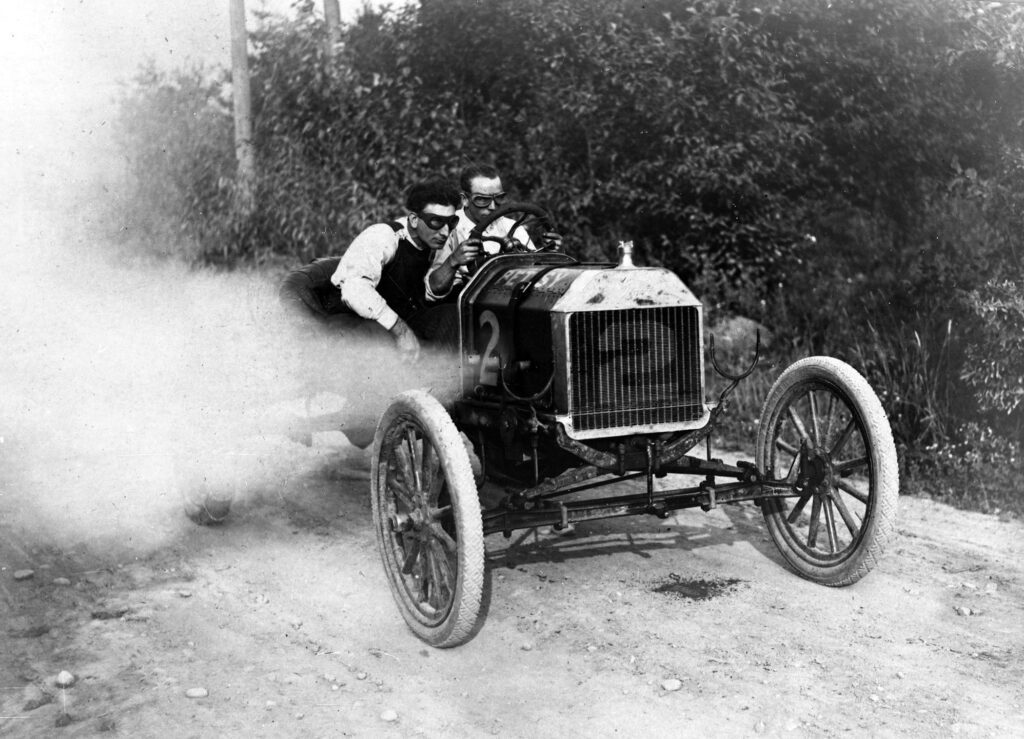
“There was intrigue, there was politics, there was all kinds of strife,” he said. “Everybody knows about Victor Galbraith, the guy in the photo who fell in a crevasse, but nobody knows that in the same race, there was another guy from Boston who fell into the crevasse. His name’s not even remembered. He was able to crawl out and continue the race. So there’s other aspects to the story that didn’t make the news.”
Warger and Jewell have been working behind the scenes to help put together a new exhibit at Whatcom Museum’s Old City Hall commemorating the epic marathon. “Mountain Runners: America’s First Endurance Race and Its Legacy Today” will open May 27, with a showing of “The Mountain Runners” taking place on the big screen at 6 p.m. Wednesday, May 24 at the Pickford Film Center.
The exhibition celebrates both the 110th anniversary of the last marathon and the 50th anniversary of the current Ski to Sea, which was inspired by its predecessor. Imagery from both eras will be on display, and there will also be film, sound recordings and memorabilia, Warger said.
In between the ending of one race and the beginning of the other, Jewell said, Bellingham found other ways to draw visitors to Whatcom County.
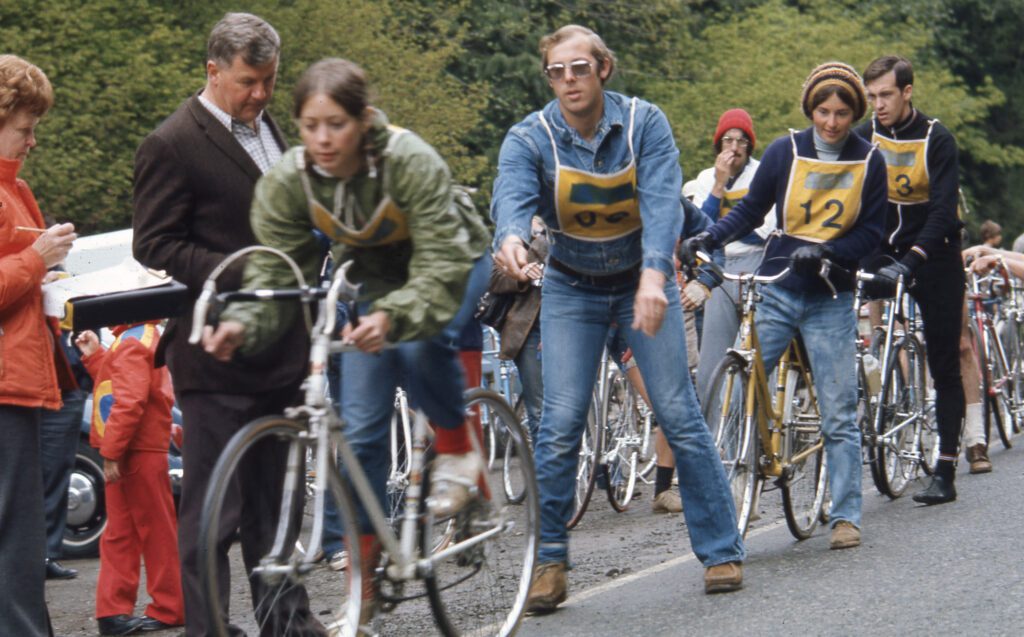
“This has a double backstory, in the sense that you’ve got the Mount Baker Marathon, but you also have the [Whatcom County] Tulip Festival started in 1920, which really was the first time you had a community event that was centered on bringing in motor tourists,” he said, adding it coincided with the paving of Chuckanut Drive.
The festival, he said, introduced tours of local fields and events such as a giant parade, which stretched for 4 miles. In 1924, a children’s parade was added to the lineup of events, and eventually, a lighted night parade was on the roster. The Tulip Festival lasted until 1929, when the Great Depression shut down the tulip industry.
Fast-forward to 1947, when a new festival called Blossom Time revived interest in the area. Parades returned, and carnivals and the bestowing of the Blossom Time Queen happened each year. In 1966, the title was given to Kelli Linville, who went on to become the mayor of Bellingham from 2011 to 2020.
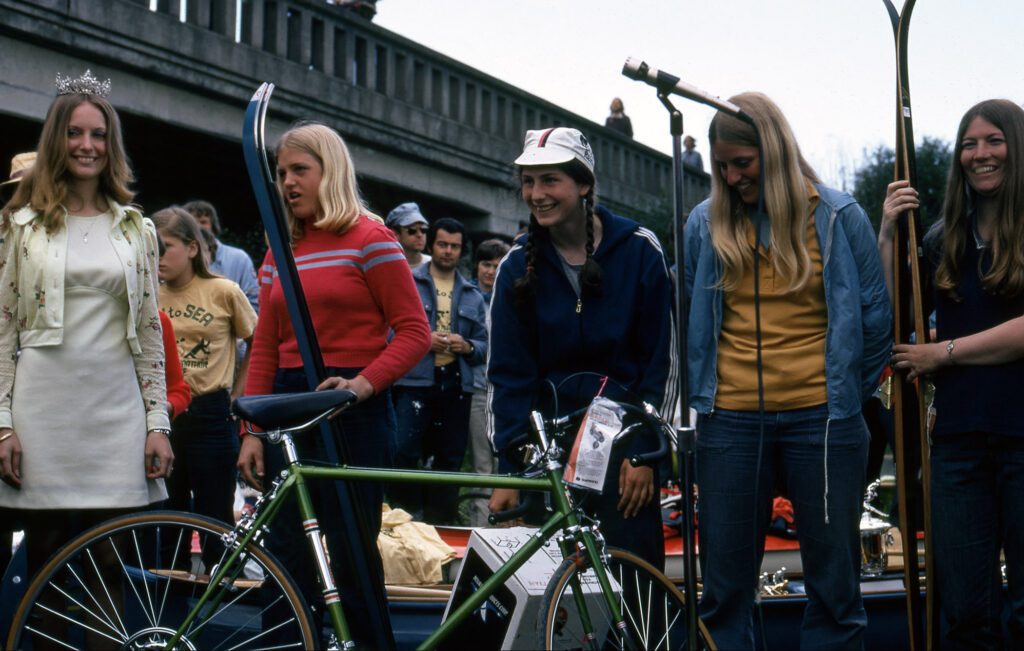
“There was no Ski to Sea during that time,” Jewell said. “It started in the early ’70s as part of Blossom Time. It’s an event where you have, if you look at the early photos, kind of a bunch of hippies just doing some stuff. Cyclists don’t have helmets or fancy bikes. It’s very casual. But what it’s picking up on is the whole fitness craze that came with the ’70s.”
Both Jewell and Warger have participated in Ski to Sea over the years. Jewell ran the downhill leg twice, and also did the road bike leg a couple of times. He’d like to do the biking part of it once more, but he doesn’t want to run again.
“That downhill leg is painful,” Jewell said. “It’s beautiful, though. The whole time I’m like, ‘Can’t I just stop for a minute and look at this view because it’s gorgeous.’”
For more details about upcoming events related to the exhibition “Mountain Runners: America’s First Endurance Race and Its Legacy Today,” go to whatcommuseum.org. To find out how to watch “The Mountain Runners” go to themountainrunners.com.

